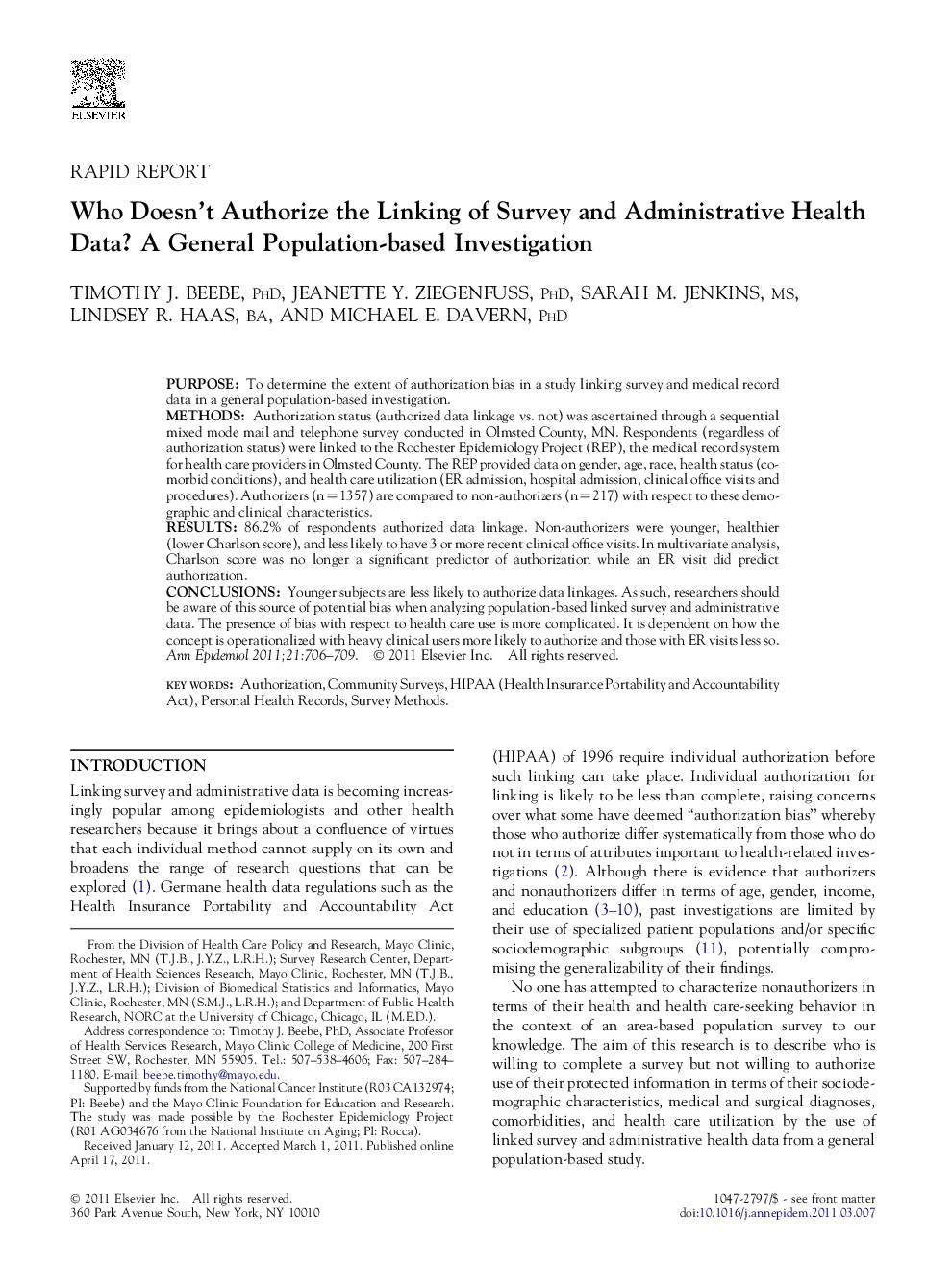| Article ID | Journal | Published Year | Pages | File Type |
|---|---|---|---|---|
| 3444623 | Annals of Epidemiology | 2011 | 4 Pages |
PurposeTo determine the extent of authorization bias in a study linking survey and medical record data in a general population-based investigation.MethodsAuthorization status (authorized data linkage vs. not) was ascertained through a sequential mixed mode mail and telephone survey conducted in Olmsted County, MN. Respondents (regardless of authorization status) were linked to the Rochester Epidemiology Project (REP), the medical record system for health care providers in Olmsted County. The REP provided data on gender, age, race, health status (co-morbid conditions), and health care utilization (ER admission, hospital admission, clinical office visits and procedures). Authorizers (n=1357) are compared to non-authorizers (n=217) with respect to these demographic and clinical characteristics.Results86.2% of respondents authorized data linkage. Non-authorizers were younger, healthier (lower Charlson score), and less likely to have 3 or more recent clinical office visits. In multivariate analysis, Charlson score was no longer a significant predictor of authorization while an ER visit did predict authorization.ConclusionsYounger subjects are less likely to authorize data linkages. As such, researchers should be aware of this source of potential bias when analyzing population-based linked survey and administrative data. The presence of bias with respect to health care use is more complicated. It is dependent on how the concept is operationalized with heavy clinical users more likely to authorize and those with ER visits less so.
